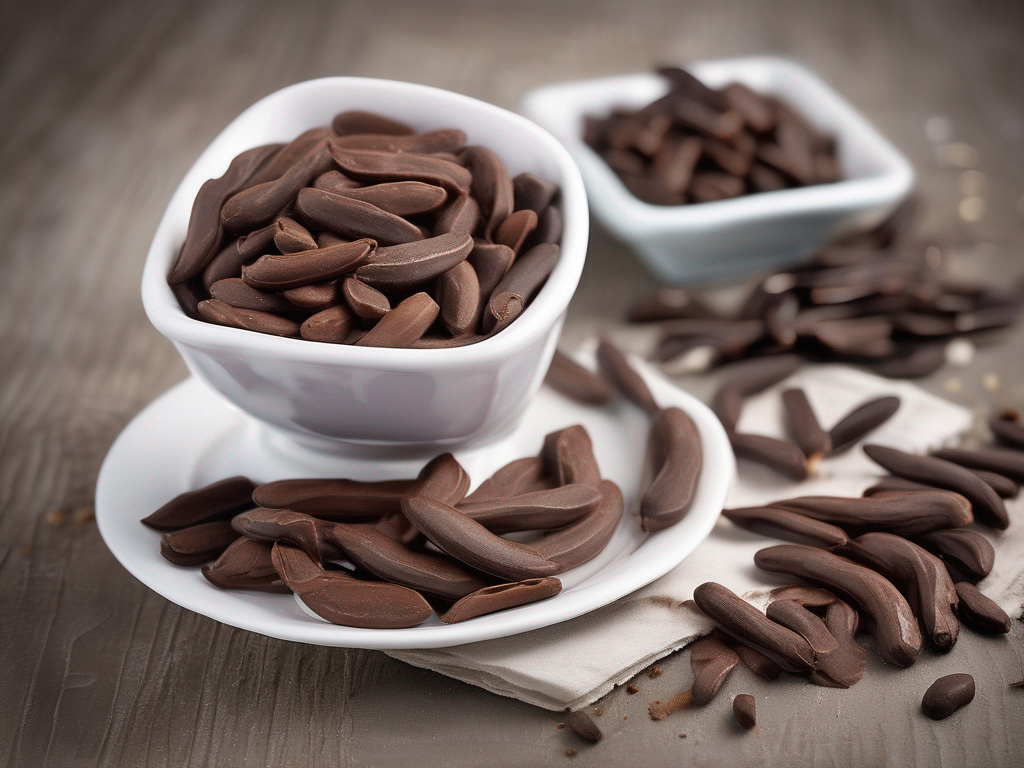
The Ultimate Guide to Storing Carob for Maximum Freshness
Get Your Free Food Safety Cheat Sheet
30 most common foods with instant answers. Print it and stick it on your fridge—completely free!
The Ultimate Guide to Storing Carob for Maximum Freshness
Carob, a popular alternative to chocolate, is a delicious and nutritious ingredient used in various culinary creations. Whether you enjoy carob in baking, smoothies, or as a standalone snack, proper storage is essential to maintain its freshness and flavor. In this comprehensive guide, we will explore the best ways to store carob to ensure it stays at its best quality for as long as possible. (Carob)
Understanding Carob: A Brief Overview
Before diving into storage tips, let's take a quick look at what carob is and why it's worth preserving. Carob comes from the pods of the carob tree, Ceratonia siliqua, and is known for its naturally sweet flavor and nutritional benefits. Rich in fiber, antioxidants, and vitamins, carob is a versatile ingredient that can be enjoyed in a variety of dishes.
Factors Affecting Carob Freshness
To effectively store carob, it's important to understand the factors that can impact its freshness. Here are some key considerations:
1. Light Exposure
Exposure to light can cause carob to deteriorate more quickly, leading to loss of flavor and nutritional quality.
2. Temperature
Extreme temperatures, both hot and cold, can affect the texture and taste of carob. It's crucial to store it in a cool, dry place.
3. Moisture
Moisture can lead to the growth of mold and bacteria on carob, compromising its safety and taste.
4. Oxygen Exposure
Oxygen exposure can accelerate the oxidation process in carob, causing it to become rancid over time.
Now that we've covered the factors that can impact carob freshness, let's explore the best practices for storing this beloved ingredient.
Best Ways to Store Carob for Maximum Freshness
When it comes to storing carob, following these tips can help prolong its shelf life and preserve its quality:
1. Choose the Right Container
Select an airtight container made of glass or BPA-free plastic to store your carob. Make sure the container has a tight-fitting lid to prevent air and moisture from entering.
2. Keep It Cool and Dark
Store carob in a cool, dark place away from direct sunlight and heat sources. A pantry or cupboard is an ideal location to maintain a consistent temperature.
3. Avoid Moisture
Ensure the storage area is dry to prevent moisture buildup. Any exposure to moisture can lead to clumping and spoilage of carob.
4. Seal Properly
After each use, seal the container tightly to minimize air exposure. This will help prevent oxidation and preserve the freshness of the carob.
5. Use Desiccants
If you live in a humid climate, consider placing a desiccant packet in the container with the carob to absorb any excess moisture.
6. Refrigeration (Optional)
While not necessary, refrigeration can further extend the shelf life of carob, especially in warm environments. Just make sure the container is tightly sealed to prevent odors from other foods.
How Long Can You Store Carob?
When stored properly, carob can maintain its quality for an extended period. Here are some general guidelines for storing different forms of carob:
- Whole carob pods: Up to 2 years
- Carob chips or powder: Up to 1 year
It's essential to check for any signs of spoilage, such as mold, off odors, or unusual texture, before using stored carob in recipes.
Conclusion
Proper storage is key to preserving the freshness and flavor of carob for an extended period. By following the tips outlined in this guide, you can enjoy the nutritional benefits and delicious taste of carob in your favorite dishes. Remember to keep it in a cool, dark place, away from moisture and air exposure, to ensure it stays at its best quality for as long as possible. Enjoy your carob creations with confidence, knowing that they are stored correctly for maximum freshness! (Carob)
Authoritative Food Safety References
These agencies and university labs inform every tip and health precaution we publish.
USDA FoodKeeper – Cold Storage Guidelines
Official refrigerator, freezer, and pantry timelines maintained by the U.S. Department of Agriculture.
Visit USDA FoodKeeperFDA Produce Safety Rule & Grower Guidance
Field-to-fridge handling practices that prevent contamination of fruits, vegetables, and leafy greens.
Visit FDA Produce SafetyCDC Foodborne Illness Prevention Hub
Surveillance-backed guidance on pathogens, symptoms, and steps to reduce foodborne illness risk.
Visit CDC Food SafetyUC Davis Postharvest Technology Center
University research detailing optimal storage atmospheres for produce after harvest.
Visit UC Davis PostharvestPenn State Extension – Home Food Preservation & Safety
Peer-reviewed extension bulletins on safe canning, chilling, and reheating practices.
Visit Penn State ExtensionGet Your Free Food Safety Cheat Sheet
30 most common foods with instant answers. Print it and stick it on your fridge—completely free! Want more? Upgrade to the complete guide with 70+ foods.
Scan your food directly and get instant safety info using our AI-powered camera feature.